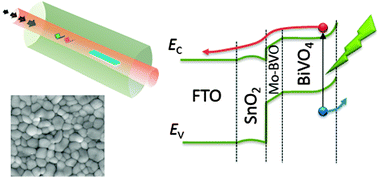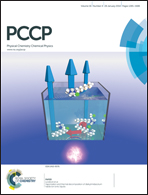BiVO4 thin film photoanodes grown by chemical vapor deposition†
Abstract
BiVO4 thin film photoanodes were grown by vapor transport chemical deposition on FTO/glass substrates. By controlling the flow rate, the temperatures of the Bi and V sources (Bi metal and V2O5 powder, respectively), and the temperature of the deposition zone in a two-zone furnace, single-phase monoclinic BiVO4 thin films can be obtained. The CVD-grown films produce global AM1.5 photocurrent densities up to 1 mA cm−2 in aqueous conditions in the presence of a sacrificial reagent. Front illuminated photocatalytic performance can be improved by inserting either a SnO2 hole blocking layer and/or a thin, extrinsically Mo doped BiVO4 layer between the FTO and the CVD-grown layer. The incident photon to current efficiency (IPCE), measured under front illumination, for BiVO4 grown directly on FTO/glass is about 10% for wavelengths below 450 nm at a bias of +0.6 V vs. Ag/AgCl. For BiVO4 grown on a 40 nm SnO2/20 nm Mo-doped BiVO4 back contact, the IPCE is increased to over 40% at wavelengths below 420 nm.


 Please wait while we load your content...
Please wait while we load your content...